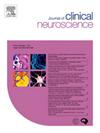Epilepsy surgery candidate identification with artificial intelligence: An implementation study
IF 1.9
4区 医学
Q3 CLINICAL NEUROLOGY
引用次数: 0
Abstract
Background
To (a) evaluate the effect of a machine learning algorithm in the identification of patients suitable for epilepsy surgery evaluation, and (b) examine the performance of a large language model (LLM) in the collation of key pieces of information pertaining to epilepsy surgery evaluation referral.
Methods
Artificial intelligence analyses were performed for all patients seen in the epilepsy or first seizure clinic at a tertiary hospital over a 12-month period. This study design was intended to emulate a case review that could subsequently be conducted periodically (e.g., quarterly). The previously derived random forest model was used to stratify all patients by their likelihood of being a candidate for epilepsy surgery evaluation, and the top 5% of cases underwent manual case note review. An open source LLM was utilised to answer 7 prompts summarising and extracting pieces of information from the most recent clinic note, which would be relevant to epilepsy surgery evaluation referral.
Results
310 patients were included in the study, with 15 undergoing manual review. Of these patients 8/15 (53.3 %) met the prespecified criteria for epilepsy surgery evaluation. 3/15 (20.0 %) of these patients were subsequently referred for further evaluation within 1 month of the study. The LLM had an accuracy ranging between 80 % to 100 % on the different prompts. Errors occurred most often when summarising the management plan. Errors included hallucinations, omissions, and copying erroneous information.
Conclusions
Artificial intelligence may be able to assist with the identification of patients suitable for epilepsy surgery evaluation.
求助全文
约1分钟内获得全文
求助全文
来源期刊

Journal of Clinical Neuroscience
医学-临床神经学
CiteScore
4.50
自引率
0.00%
发文量
402
审稿时长
40 days
期刊介绍:
This International journal, Journal of Clinical Neuroscience, publishes articles on clinical neurosurgery and neurology and the related neurosciences such as neuro-pathology, neuro-radiology, neuro-ophthalmology and neuro-physiology.
The journal has a broad International perspective, and emphasises the advances occurring in Asia, the Pacific Rim region, Europe and North America. The Journal acts as a focus for publication of major clinical and laboratory research, as well as publishing solicited manuscripts on specific subjects from experts, case reports and other information of interest to clinicians working in the clinical neurosciences.
 求助内容:
求助内容: 应助结果提醒方式:
应助结果提醒方式:


